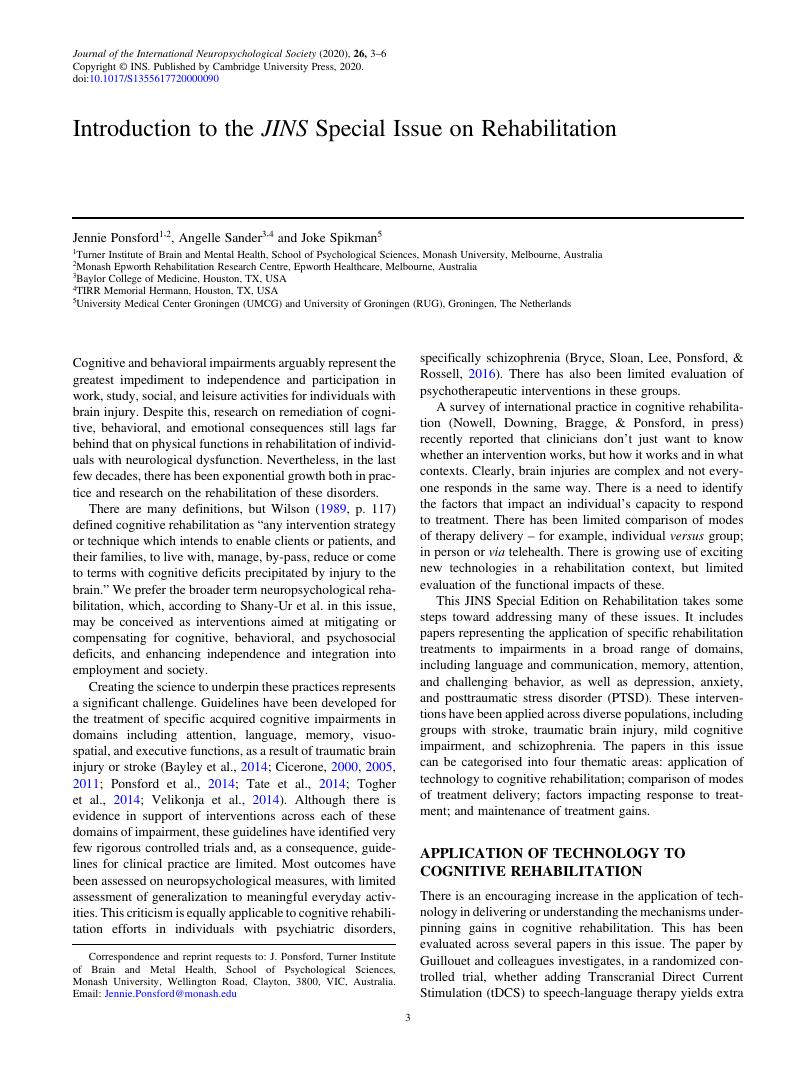Nowell, C.,
Downing, M.,
Bragge, P.,
Ponsford, J. (
2019).
Current practice of cognitive rehabilitation following traumatic brain injury: An international survey.
Neuropsychological Rehabilitation [Epub ahead of print]. Published online 5 June 2019. doi:
10.1080/09602011.2019.1623823
CrossRefGoogle Scholar 